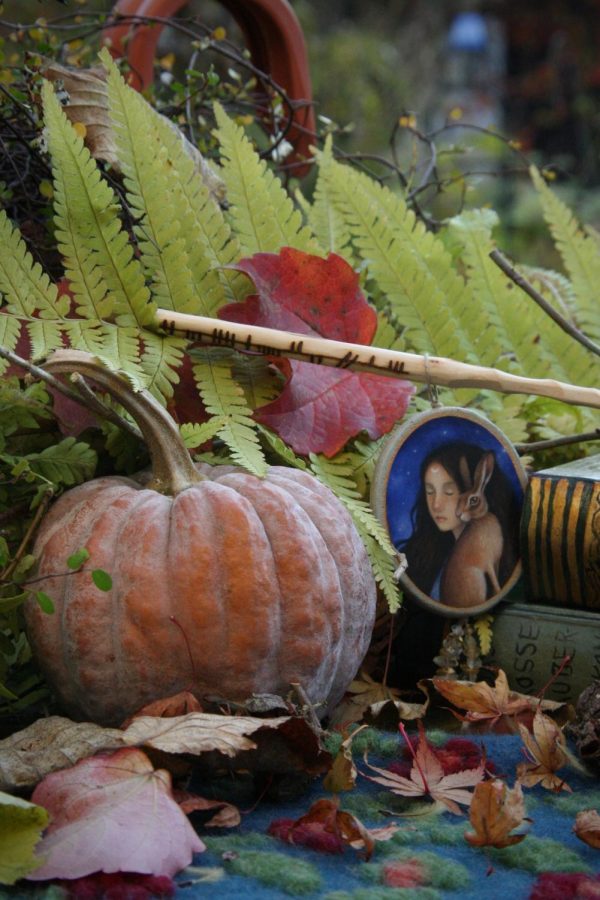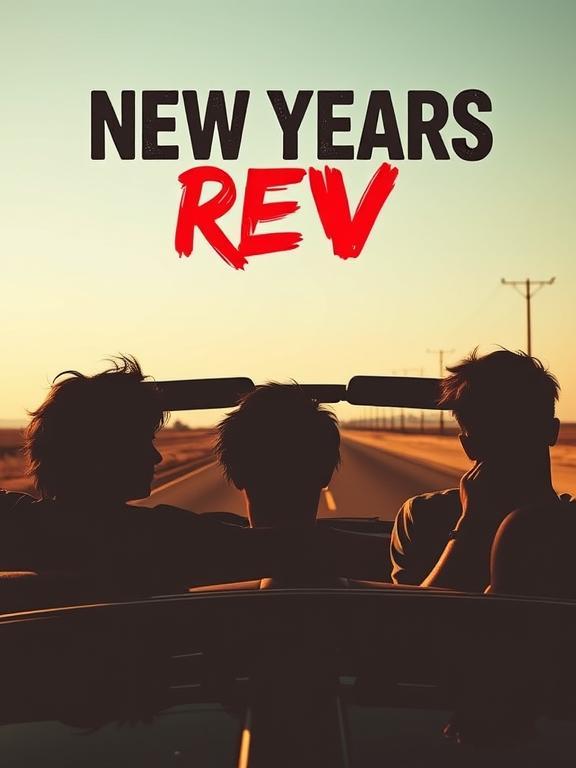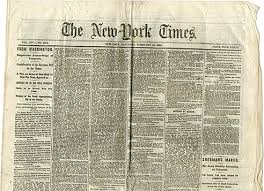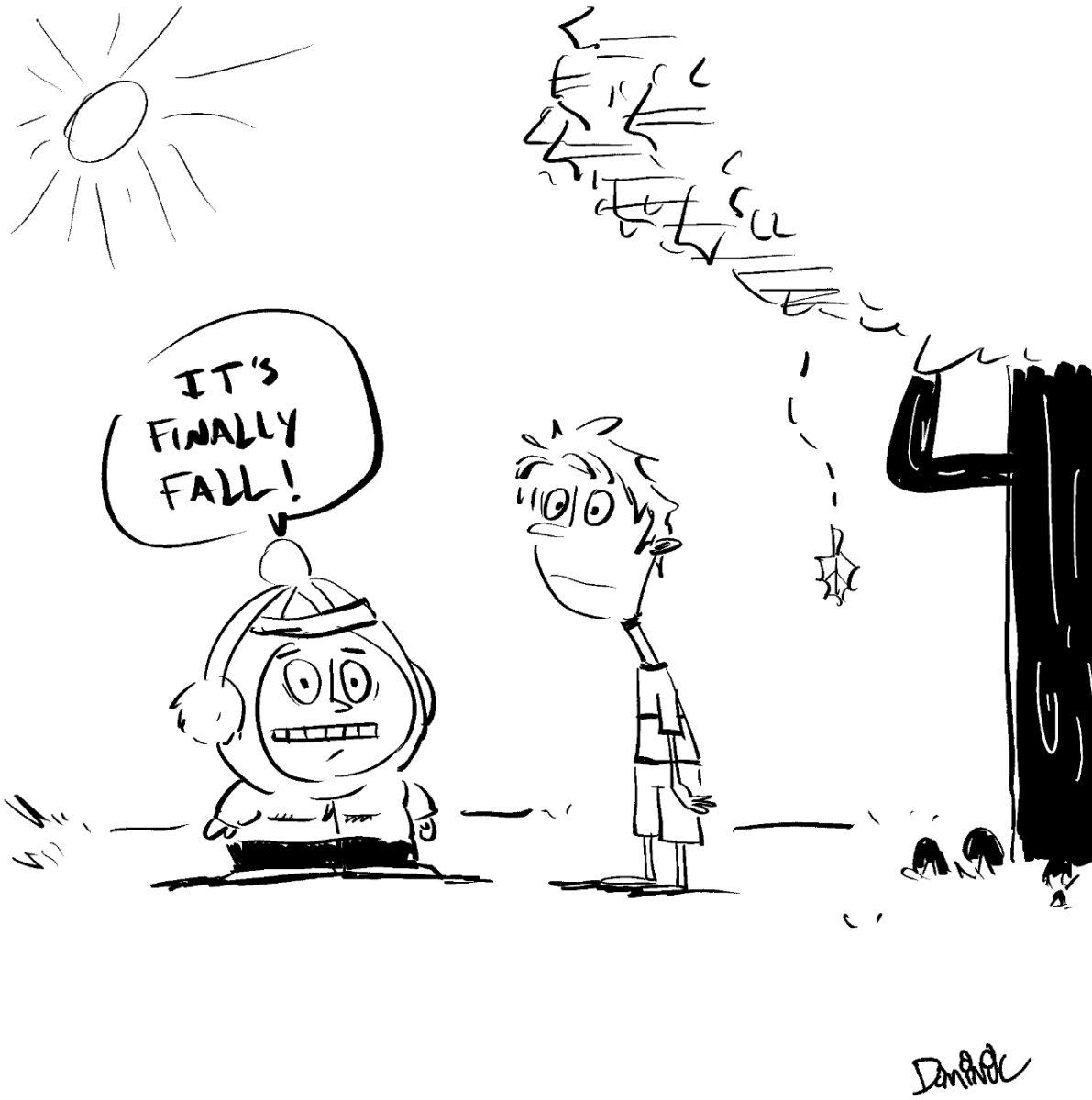The Forgotten Holidays and How We Still Celebrate Them Today
September 16, 2020
Once upon a time, people used their beliefs to explain the world around them. They created numerous unique holidays that celebrated the world around them. Over time these holidays were cast aside, and new holidays, the ones that still exist today took their place. In fact, most of our holidays today are based on the older ones in one way or another. These holidays, from the start of the year, Samhain, to the Fall Equinox, Mabon, gave us traditions that we still uphold today.
Samhain: Samhain pronounced saw-win, is the start of the new year, and the last of the three harvests. In the later years, it was given the name All Hallow’s Eve, to which we adapted into Halloween. In this holiday, people believed that the veil between the living world and the dead dropped, allowing the dead to walk among us. People would leave out offering to the dead as a way of saying “hello” and would try and contact their ancestors. Groups brought in the last of their harvests and held big feasts in honor of those that had passed. Everyone began to shut their doors and windows in anticipation of winter. This holiday was celebrated annually from the sunset of October 31st to the sunset on November 1st.
Yule: Yule is the next holiday on this wheel of the year. Yule-tide is the Winter Solstice. The days are the coldest now, and people are shut tight within their homes. It’s tradition to burn the Yule log in order to keep warm. They brought in the Yule tree and decorated it. They baked goods and hung up herbs similar to the mistletoe for traditions. People kissed under the mistletoe to honor our deities and to serve as protection from death. With Yule, everyone is awaiting the days of the cold to be over and for spring to come, so that the planting can begin again. Yule took place on December 21st. Christmas has now taken the place of Yule in mostly everyone’s hearts. And if you’ve ever heard of Santa Claus; you might be surprised to find out that his origins partially come from this holiday, and the Norse God Odin who is associated with it.
Imbolc: Imbolc pronounced im-blk, stood as a holiday between the winter solstice and the Spring Equinox. It was known as the time period of love and has a lot in common with modern times Valentine’s Day. It is the time in which the Earth is waking up again. All hibernating creatures are starting to arise and become active. The people of this time celebrated the Goddess Brigid. It was a time when the plants started to grow again. People cleaned and got rid of any negative ideas. This holiday was also known as Candlemas and was celebrated on February 1st.
Ostara: Ostara was the Spring Equinox, and corresponds directly to the well-known holiday Easter. Winter has finally melted away, and a new life is now emerging. Plants are starting to bloom, showering us in their light and bright colors. Pagans celebrated the gods/goddesses that dealt with spring and the animals within it. Eggs were being incubated, and newborn creatures became the next generation. This is one of the main reasons we have the Easter Bunny and colored egg hunts. Both eggs and rabbits are two of the main symbols for this holiday. Ostara was celebrated on March 20th.
Beltane: There are a lot of different ways to spell and pronounce this holiday. Most commonly known as May Day, other variations of the spelling include Betaine and Beltain. Most commonly Beltane is pronounced the way in which it looks, but the proper pronunciation is Bel-tin. Although this holiday isn’t as widely known today as it used to be, it is still a major one. As one of the sun holidays, it is a great day to have a picnic outside or build a bonfire when the sun starts to set. Maypoles, tall poles with large strands of string, used to be set up, allowing people to weave the ribbons around. Gift baskets of miniature May-Poles and baked goods were given out to neighbors as a sign of good peace. Beltane is celebrated on May 1st.
Litha: Litha is more commonly known as the Summer Solstice. It is the biggest sun-holiday and paves the way for the harvests, and winter. On this day the Oak King and the Holly King battle, with the Holly King winning, taking his rightful place as ruler from Litha to Yule. Then the Oak King takes over at Yule, and they battle again at the next Litha. There are many big bonfires this day, and it’s when the biggest picnics were held. We honor the sun gods/goddesses such as Apollo as we give thanks to the light they provide us. The days are the warmest now, allowing our crops to soak up the sun’s nutrients. Sunflowers are one of the biggest symbols on this day. This holiday falls from June 20th to the 22nd, depending on when the solstice falls.
Lammas: Lammas, also known as Lughnasadh, is the first of the three harvests. This holiday is the grain holiday, and we give thanks to the god Lugh for dying in order to give us our bountiful harvest. We bake all sorts of goods from bread to pies. Nowadays, this holiday is still celebrated within some places; however, it is now a Christian Holiday known as Loaf Mass. It is still celebrated upon the same day, August 1st, and still celebrated the first harvests. The term loaf directly translates to bread.
Mabon: Mabon is the second of the two harvests and is the Fall Equinox. This is the fruit harvest and thanksgiving of sorts. It is a time to bring the family together and eat huge feasts prepared for the occasions. The day and night are of equal length, and we are getting for the darker portion of the year. We still honor the gods/goddesses of the sun and those of spring, as we know that they are going away, waiting for their time to shine again. This holiday falls on September 21st.
After this, the wheel of the year starts back over again. Now, my friends, we all know a little bit more about the oldest origins behind our most well-known holidays. If you would like, keep an eye out next time you are within one of these seasons and spot how many traditions you know the origins to.












